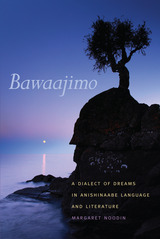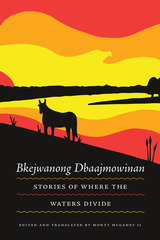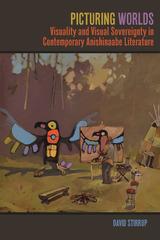4 books about Ojibwa literature

Against Extraction
Indigenous Modernism in the Twin Cities
Matt Hooley
Duke University Press, 2024
In Against Extraction Matt Hooley traces a modern tradition of Ojibwe invention in Minneapolis and St. Paul from the mid-nineteenth century to the present as that tradition emerges in response to the cultural legacies of US colonialism. Hooley shows how Indigenous literary and visual art modernisms challenge the strictures of everyday life and question the ecological, political, and cultural fantasies that make multivalent US colonialism seem inevitable. Hooley analyzes literature and art by Louise Erdrich, William Whipple Warren, David Treuer, George Morrison, and Gerald Vizenor in relation to histories of Indigenous dispossession and occupation, enslavement and Black life, and environmental harm and care. He shows that historical narratives of these cities are intimately bound up with the violence of colonial systems of extraction and that concepts like Indigeneity and sovereignty extend beyond treaty-granted promises of political control. These works, created in opposition and proximity to the extraction of cultural, political, and territorial resources, demonstrate how Indigenous claims to life and land matter to rethinking and unmaking the social and ecological devastations of the colonial world.
[more]

Bawaajimo
A Dialect of Dreams in Anishinaabe Language and Literature
Margaret Noodin
Michigan State University Press, 2014
Bawaajimo: A Dialect of Dreams in Anishinaabe Language and Literature combines literary criticism, sociolinguistics, native studies, and poetics to introduce an Anishinaabe way of reading. Although nationally specific, the book speaks to a broad audience by demonstrating an indigenous literary methodology. Investigating the language itself, its place of origin, its sound and structure, and its current usage provides new critical connections between North American fiction, Native American literatures, and Anishinaabe narrative. The four Anishinaabe authors discussed in the book, Louise Erdrich, Jim Northrup, Basil Johnston, and Gerald Vizenor, share an ethnic heritage but are connected more clearly by a culture of tales, songs, and beliefs. Each of them has heard, studied, and written in Anishinaabemowin, making their heritage language a part of the backdrop and sometimes the medium, of their work. All of them reference the power and influence of the Great Lakes region and the Anishinaabeakiing, and they connect the landscape to the original language. As they reconstruct and deconstruct the aadizookaan, the traditional tales of Nanabozho and other mythic figures, they grapple with the legacy of cultural genocide and write toward a future that places ancient beliefs in the center of the cultural horizon.
[more]

Bkejwanong Dbaajmowinan/Stories of Where the Waters Divide
McGahey, Monty
Michigan State University Press, 2021
Bkejwanong means “where the waters part,” but the waters of St. Clair River are not a point of separation. The same waters that sustain life on and around Bkejwanong—formerly known as Walpole Island, Ontario—flow down into Chippewas of the Thames, the community to which author Monty McGahey II belongs. While there are no living fluent speakers of Anishinaabemowin in this community, McGahey has fostered relationships with fluent speakers from nearby Bkejwanong. Bkejwanong Dbaajmowinan is a collection of stories from these elders, who understand the vital importance of passing on the language to future generations in order to preserve the beloved language and legacy of the community. Like the waters of St. Clair River, the relationships between language speakers and learners have continued to nourish Anishinaabe communities in Bkejwanong and Chippewas of the Thames, particularly in language revitalization. With English translations, this resource is essential for Anishinaabemowin learners, teachers, linguists, and historians.
[more]

Picturing Worlds
Visuality and Visual Sovereignty in Contemporary Anishinaabe Literature
David Stirrup
Michigan State University Press, 2020
Paying attention to the uses that Anishinaabe authors make of visual images and marks made on surfaces such as rock, bark, paper, and canvas, David Stirrup argues that such marks—whether ancient pictographs or contemporary paintings—intervene in artificial divisions like that separating precolonial/oral from postcontact/alphabetically literate societies. Examining the ways that writers including George Copway, Jane Johnston Schoolcraft, Gordon Henry, Louise Erdrich, Gerald Vizenor, and others deploy the visual establishes frameworks for continuity, resistance, and sovereignty in that space where conventional narratives of settlement read rupture. This book is a significant contribution to studies of the ways traditional forms of inscription support and amplify the oral tradition and in turn how both the method and aesthetic of inscription contribute to contemporary literary aesthetics and the politics of representation.
[more]
READERS
Browse our collection.
PUBLISHERS
See BiblioVault's publisher services.
STUDENT SERVICES
Files for college accessibility offices.
UChicago Accessibility Resources
home | accessibility | search | about | contact us
BiblioVault ® 2001 - 2024
The University of Chicago Press









